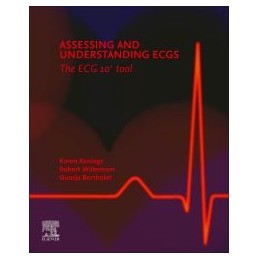- Obniżka
- Nowy


 Dostawa
Dostawa
Wybierz Paczkomat Inpost, Orlen Paczkę, DHL, DPD, Pocztę, email (dla ebooków). Kliknij po więcej
 Płatność
Płatność
Zapłać szybkim przelewem, kartą płatniczą lub za pobraniem. Kliknij po więcej szczegółów
 Zwroty
Zwroty
Jeżeli jesteś konsumentem możesz zwrócić towar w ciągu 14 dni*. Kliknij po więcej szczegółów
This new title is ideal for clinicians working in out-of-hospital settings who need to interpret electrocardiography safely and understand when to consult a cardiologist.
The book presents a new method, ECG10+, for assessing ECGs without missing relevant pathology. The method enables readers systematically and safely to read ECGs by addressing 10 ECG findings and linking them to the clinical presentation. The book covers indications and quality of assessment, how to undertake ECGs, explanations of equipment and assessment of the various types of ECG waves.
Assessing and Understanding ECGs is ideal for GPs, nurses and other healthcare workers who may need to make or interpret ECGs, as well as residents and clinicians working in hospital settings both in and outside cardiology.
Opis
Indeks: 104330
Autor: Pat Lilley
Key Ideas for Health Professions Education
